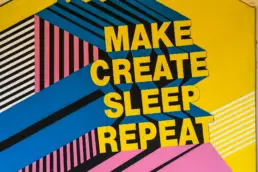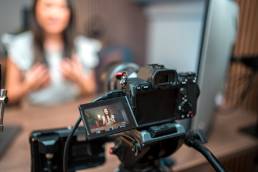The connection between design and science has always fascinated me. I like the idea of harnessing how the brain works to create more impactful designs. That idea is called neuroaesthetics.
As designers, that’s what we’re all chasing. The fusion of design and neuroscience has become more critical as technology and public preference rapidly evolve.
In this blog, let’s explore 9 ways neuroscience influences how our brains perceive and process visual information. My goal is to help fellow designers create impactful work that taps into human psychology.
01. The Brain is Your Client
The brain is a complex organ capable of housing everything that makes us tick. We can thank our personality, preferences, and processing skills to the brain. It has specialized regions to process visual stimuli. Meaning, it dictates what we pay attention to. At the end of the day, the brain is every designer’s true client.
02. The Role of Attention in Design
We know the brain controls what people pay attention to. That focus is a precious resource in design. Our whole purpose is to capture attention in design and strategically guide it. Science tells us that our brains are drawn to elements like color, size, and movement. We can use these to drag our eyes down to the exact points we want. It is why you see things like subtle animation on buttons. Animation is never just a playful addition. It’s science. Designs that utilize color theory, contrast, subtle animation, or play with size ratios perform well.
03. Influencing Emotions
Design has the power to influence emotions. It cues people in on how to feel about the world around them. Understanding how emotions influence other cognitive processes helps us best evoke specific emotional responses. A great example of this is to look at color palettes and imagery. Shadowed editing and dark-hued colors present a moody feel. Bright or pastel colors can give the feeling of youth, Spring, and lightness. Have you ever looked at the same graphic in different hues? You may notice your emotions swaying. You can thank your brain for that.
04. Shaping Perceptions Through Experience
Prior experiences shape what we perceive visually. Our brains use past encounters to understand the world and make instant decisions and emotional responses. This works for and against us. For instance, if you had a beloved pet Golden Retreiver as a child, you may be more influenced towards a company that uses a Golden Retreiver in its branding. On the other hand, if you had a bad experience with a Golden Retriever, you may unconsciously steer away from that same company. We can say the same thing about other imagery. If you have fond memories of camping out West as a child, you may gravitate towards branding with similar forest imagery. Knowing the intended audience helps us make informed design decisions.

You’ve probably heard the phrase “perception is reality”. According to psychologists, a more accurate phrase is “perception is my reality.”
05. The Power of Visual Hierarchy
We often hear the term “visual hierarchy.” It’s the practice of organizing data in a logical flow. A well-structured visual hierarchy in acts as a roadmap for the brain, letting people scan for important information first. Remember when I mentioned the brain is attracted to colors, size ratio, etc? Here’s where that plays in again. People like to scan. That’s why you see the most important text in headlines with bigger, bolder fonts. The brain notices the bolder font first.
06. The Role of Color and Contrast
Color and contrast influence all aspects of life. Our brains are trained to seek out the difference. Designers use color to guide the eye seamlessly across the page. By adding pops of color, we can demand and hold attention. You can see this when brands use colors, in addition to bolded fonts, in headline text and CTAs. That’s why we use the most vibrant colors in the palette for button colors. However, we must be careful to keep a strong contrast. People with colorblindness or poor eyesight struggle to see objects with too little contrast.
07. The Importance of Typography
Size isn’t the only factor to consider with text. Typography plays a crucial role in the readability and tone of the design. You want to use heading and body font pairings that feel cohesive and match the brand. Starbucks would feel less modern and welcoming if its designers chose a Courier Sans font instead of its signature, clean font. (I think we’re all happy they didn’t go that route.) Typography matters.

Typography is often the single most important element of your design.
08. The Role of Proximity and Spacing
Have you ever looked at a paragraph of text and felt something was off? Maybe something caused you to be unable to focus on the words. You were probably on to something. Our brains naturally use proximity and spacing to process information. Grouping related elements or text together makes the brain assume it is connected. When it’s not, it breaks your focus. Spacing has the same effect. Too much space between the lines of a regular body paragraph, like this one, may make the text hard to read. Our brains naturally assume each line is unrelated. On the other hand, too little space between lines makes it difficult for our eyes to focus. Be mindful of how you use proximity and spacing in your design.
09. The Influence of Movement and Animation
Recently, I wrote about seeing subtle motion design as a trend. The reason is neuroscience. Our eyes are used to seeing static websites and graphics. When it detects a hint of movement, even subtle movement, it zeros in. This allows us to gain and hold visitors’ attention where we want it. Examples of this in your design are a mouse-over animated effect on buttons or adding a mouse-over shadow to background boxes.
Designing for the Brain
Designers have always designed for the brain. That hasn’t changed. We constantly seek to influence our audience. The difference is we now have research and data to propel our designs. We can consciously arm ourselves with neuroscience and psychology. I don’t think that takes away from the creativity of design. For me, it enhances my work. I hope this article inspires you to dig deeper into the science and let it enhance your work, too.
Borja Zamora
A Barcelona native but San Francisco based, Borja explores digital marketing and design through articles, images, and quotes.
Related Posts
December 16, 2024
10 Groundbreaking Branding Trends Shaping the Future in 2025
Explore 10 innovative branding trends for 2025, from AI personalization to…
September 15, 2024
From Band-Aid to Popsicle: 12 Brands That Became Household Names
Great design is all around you. In our daily lives, we interact with objects…
August 27, 2024
The Secret Lives of Objects: Hidden Design Stories in Everyday Product Designs
Great design is all around you. In our daily lives, we interact with objects…
April 30, 2024
sfBIG: A Non-Profit Website Re-Design & Branding Case Study
After successfully rebranding several non-profits, I was honored to be asked to…
Related Posts
December 16, 2024
10 Groundbreaking Branding Trends Shaping the Future in 2025
Explore 10 innovative branding trends for 2025, from AI personalization to…
September 15, 2024
From Band-Aid to Popsicle: 12 Brands That Became Household Names
Great design is all around you. In our daily lives, we interact with objects…
August 27, 2024
The Secret Lives of Objects: Hidden Design Stories in Everyday Product Designs
Great design is all around you. In our daily lives, we interact with objects…
April 30, 2024
sfBIG: A Non-Profit Website Re-Design & Branding Case Study
After successfully rebranding several non-profits, I was honored to be asked to…






